Your wine glass is too big
It's playing tricks on your brain

'Tis the season for a big glass of red wine, possibly by a roaring fire.
But be warned: If you're driving after you have a glass, or watching your calories, or just trying to keep your wits about you, watch out, because you're probably pouring too much. And a key reason why is that your wine glass is too big.
A serving size of wine is 5 ounces, or about 150 milliliters — which means your standard bottle holds five servings. Studies show that when people have bigger glasses into which to pour their wine, they tend to pour an average of 12 percent more than a serving size. Wine expert Victoria James told Self that most people at home pour closer to 7 to 9 ounces (which is 40 to 80 percent more than the average serving).
The Week
Escape your echo chamber. Get the facts behind the news, plus analysis from multiple perspectives.

Sign up for The Week's Free Newsletters
From our morning news briefing to a weekly Good News Newsletter, get the best of The Week delivered directly to your inbox.
From our morning news briefing to a weekly Good News Newsletter, get the best of The Week delivered directly to your inbox.
Most of us are not great at judging volume by sight when it comes to wine (or to food): If the vessel looks small, we think we're getting less than we ought to, and if the vessel looks big, we think it ought to be more full to get enough.
Wine glasses have been trending bigger since the 1970s — spurred, in part, by multimillion dollar glassware company Riedel, which pioneered the first-ever varietal-specific glass in 1958 (which is part of the collection at the Museum of Modern Art in New York). The move towards bigger glasses is part of a growing acceptance that the shape and depth of a wine glass can influence a drinker's experience, by changing the ratio of air to wine in the glass, how much of a nose-full of scent you get as you take a sip, and how much surface area of the wine remains in contact with the air.
How much the glass affects the average consumer's perception is, to be fair, a matter of some controversy. While it's generally accepted that most reds are best experienced in broader glasses than whites, the Riedel for-every-wine-a-different-glass phenomenon (promoted by many of the giants of the American wine industry) has its detractors. Those detractors point out that having a dozen different kinds of glasses doesn't necessarily make sense for mass market wine consumers, for whom there will be little or no difference made by a glass in the taste of a $10 or $15 bottle. And studies show that the perception that the glasses make a difference can be influenced by being told the glasses will make a difference — much like consumers' perception of which wines taste good can be influenced by being told it's more expensive.
Though the science is still out on how radically different a wine will taste depending on the shape of the glass, the basic point of using different glasses for different wines (even just reds and whites) is that much of the experience of drinking wine other than the intoxication comes from the smell. Like with most food, wine doesn't taste the same if you plug your nose or have a bad cold that clogs your nose; you will smell more of a wine if your nose ends up in the glass while you're drinking.
A free daily email with the biggest news stories of the day – and the best features from TheWeek.com
That's one reason why you almost can't buy those tiny little wine glasses you used to find in old Italian or French restaurants: They have gone out of style with consumers because of aesthetic preferences, certainly, but they also don't assist drinkers in getting a fuller olfactory experience from wine.
Still, you can find them — I found a set in my basement, courtesy of my landlord. And to show how the perception of size affects your perception of getting "enough" wine, I lined up two older and two modern types of wine glasses.
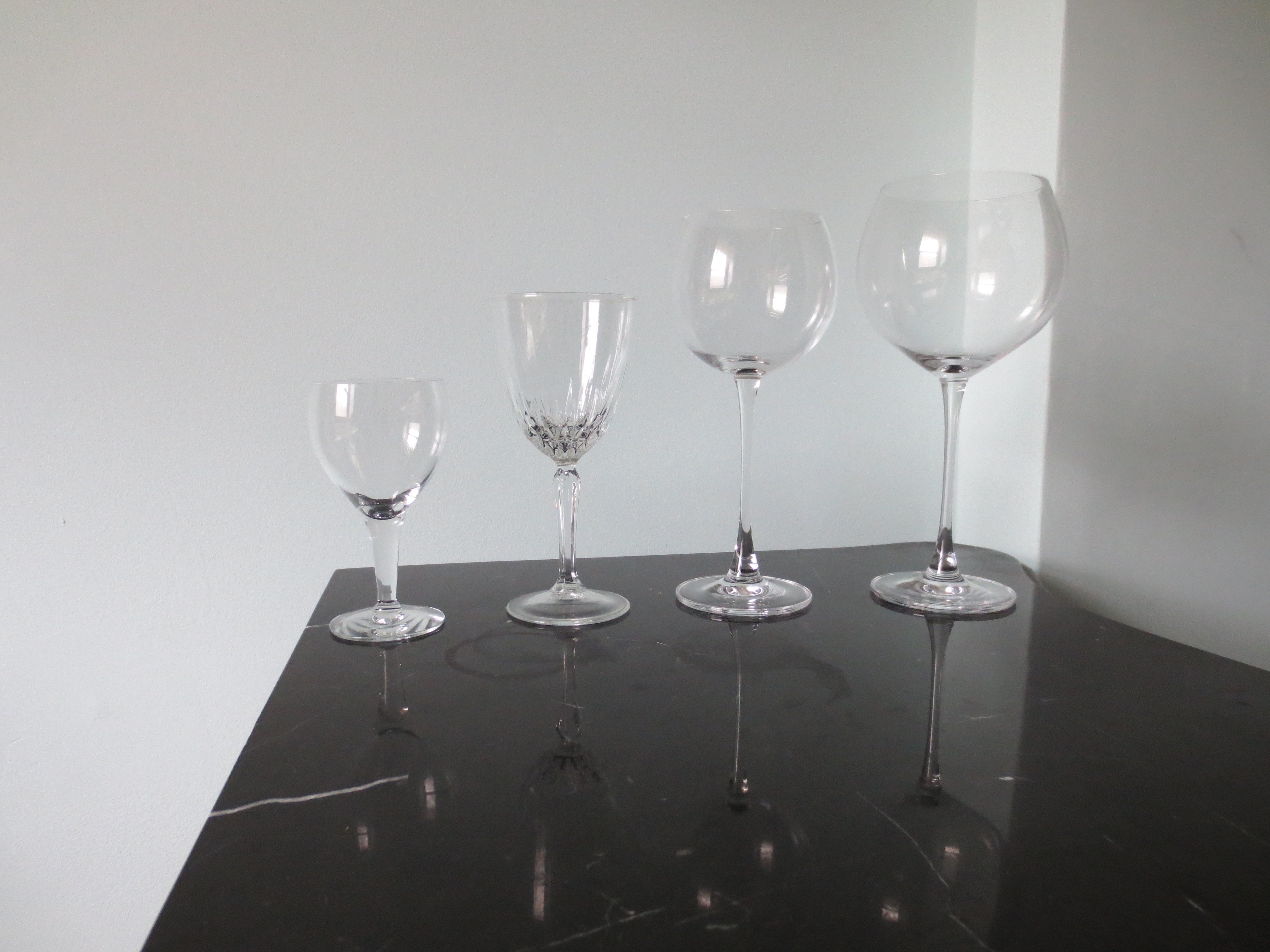
From left to right, you're looking at a manufactured wine glass from around the 1970s, one from around the 1980s, and two Lenox crystal stemware pieces (the Balloon and Grand Beaujolais from their Tuscany Classics collection, neither of which they appear to still make).

This is 5 ounces (about 150 mL) of red wine in an 8-ounce Pyrex measuring cup. Most people looking at this picture will probably assume that it won't fit in the left-hand glass, and will fill up a solid portion of the right-hand glass.
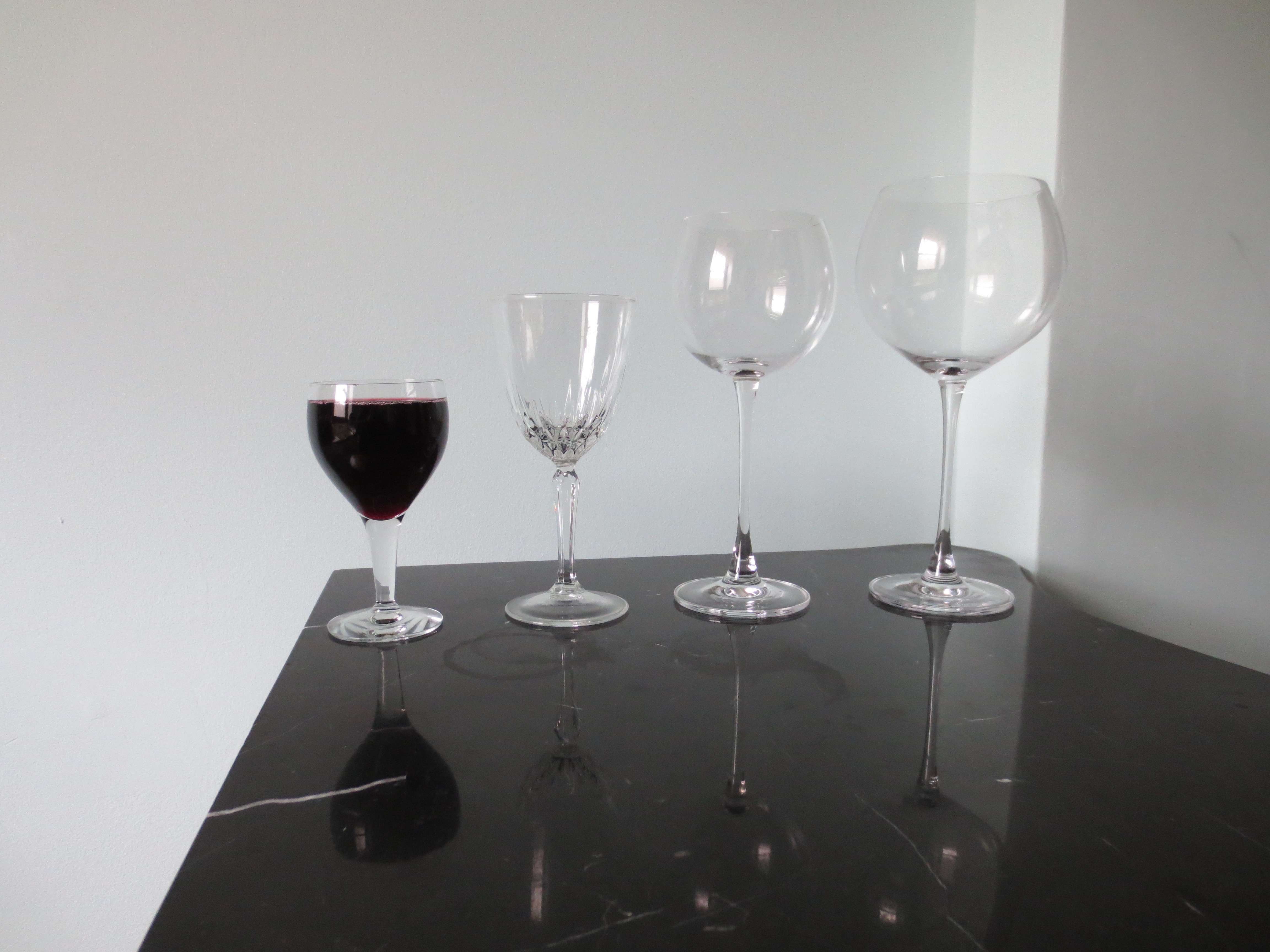
And yet… as you can see, the glass on the right holds almost precisely 5 ounces of wine: Those old-timey glasses you see in some French bistros and red sauce Italian places aren't actually stiffing you on the pour, if they're filling it up.
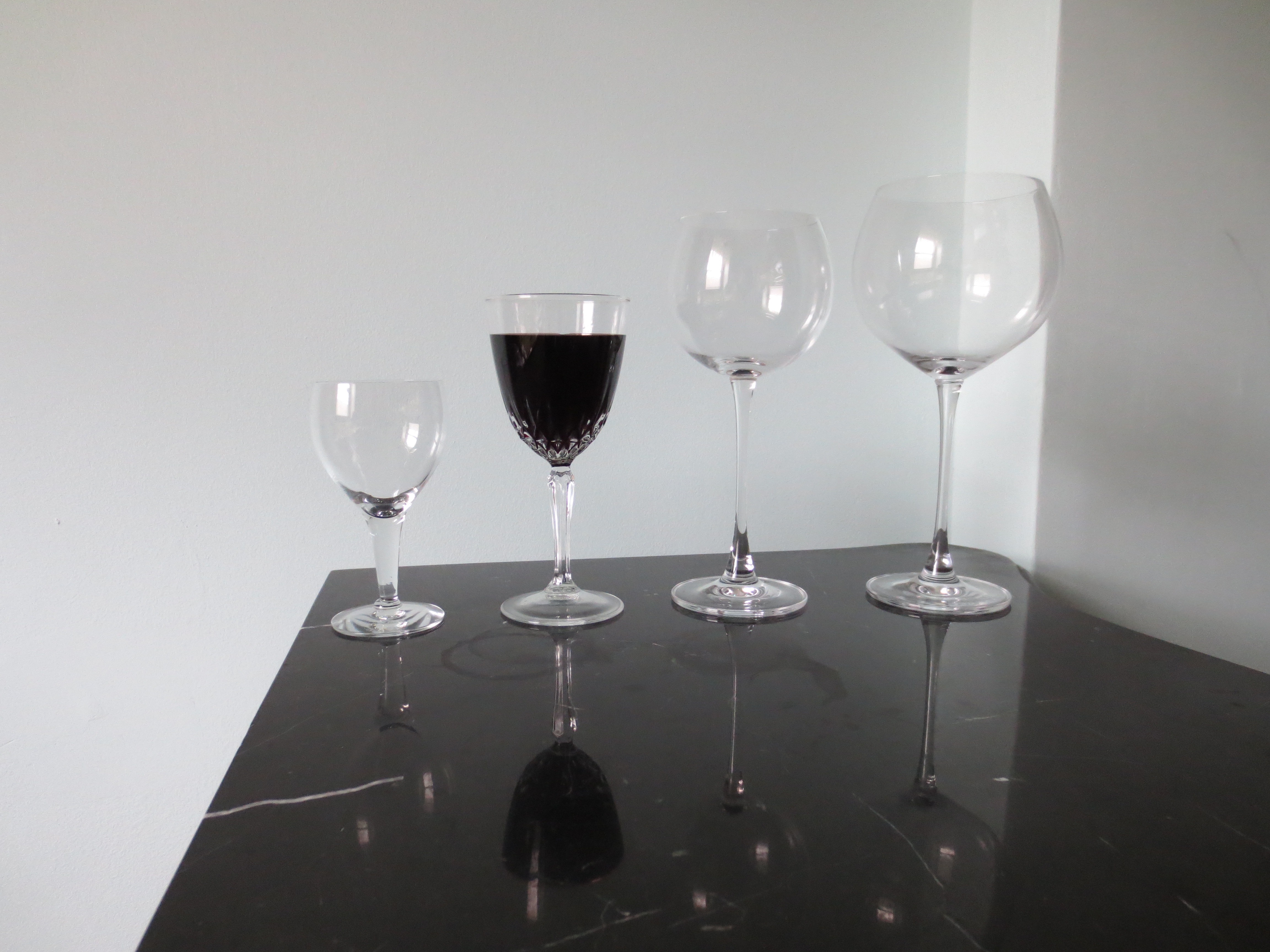
The second glass (which I usually use to serve whites or rosés), seems much larger than the first and, yet, it is nearly as full. It also has, with a 5 ounce pour, a little more room to sip and a lower likelihood of spilling, if you're remotely clumsy.
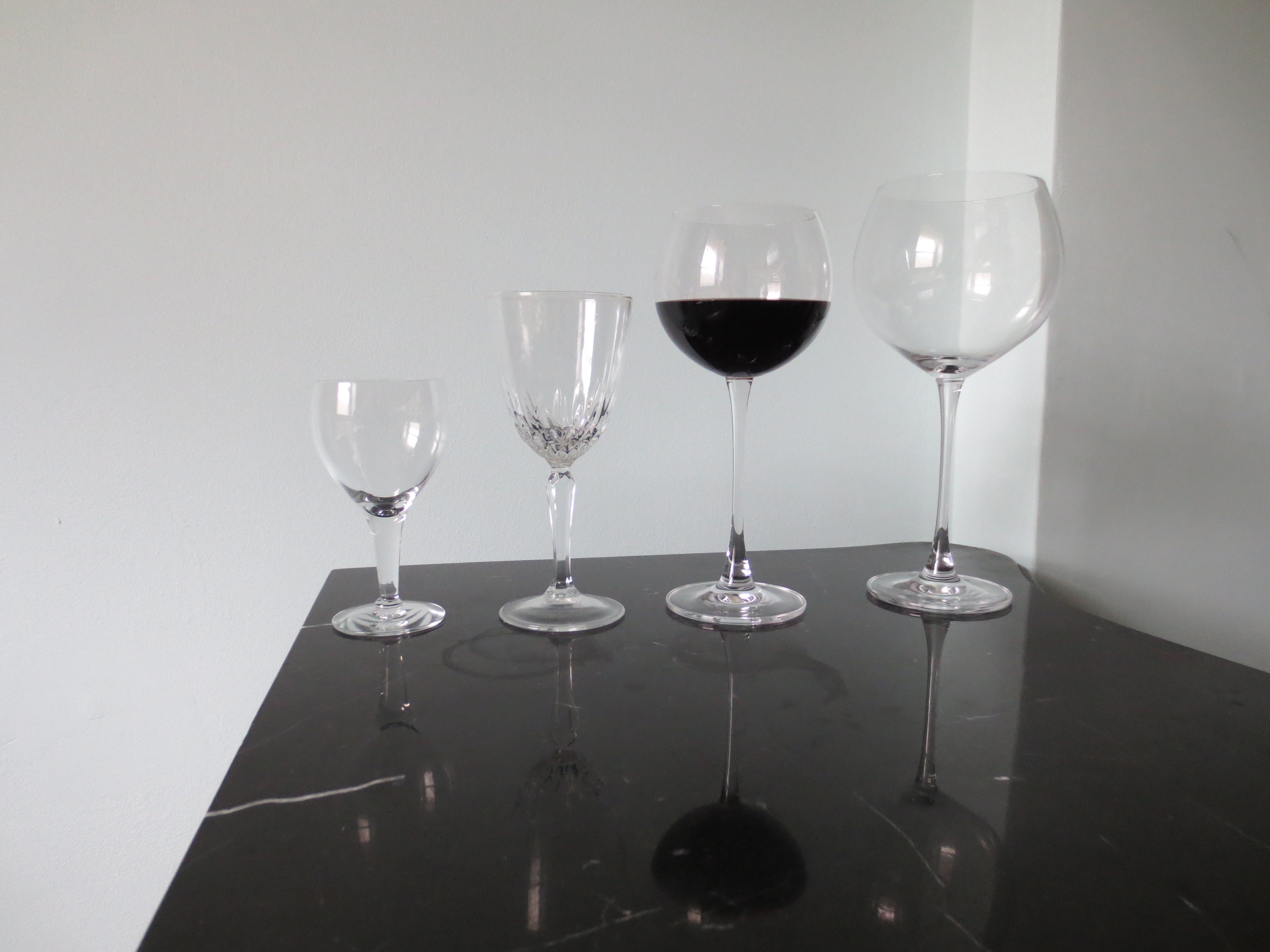
But in the third glass, 5 ounces doesn't even come halfway up to the top, and the bowl of that glass, while slightly rounder and larger than a typical red wine glass you might find in a restaurant, isn't absurdly huge and goblet-like. (It holds, if you fill it up all the way, about 13 ounces comfortably, or nearly three servings)
Still, it's easy to see why someone might add 12 percent more wine: That would probably "look" about half full, even if you were paying attention to your pour and the air-to-wine ratio in the glass.
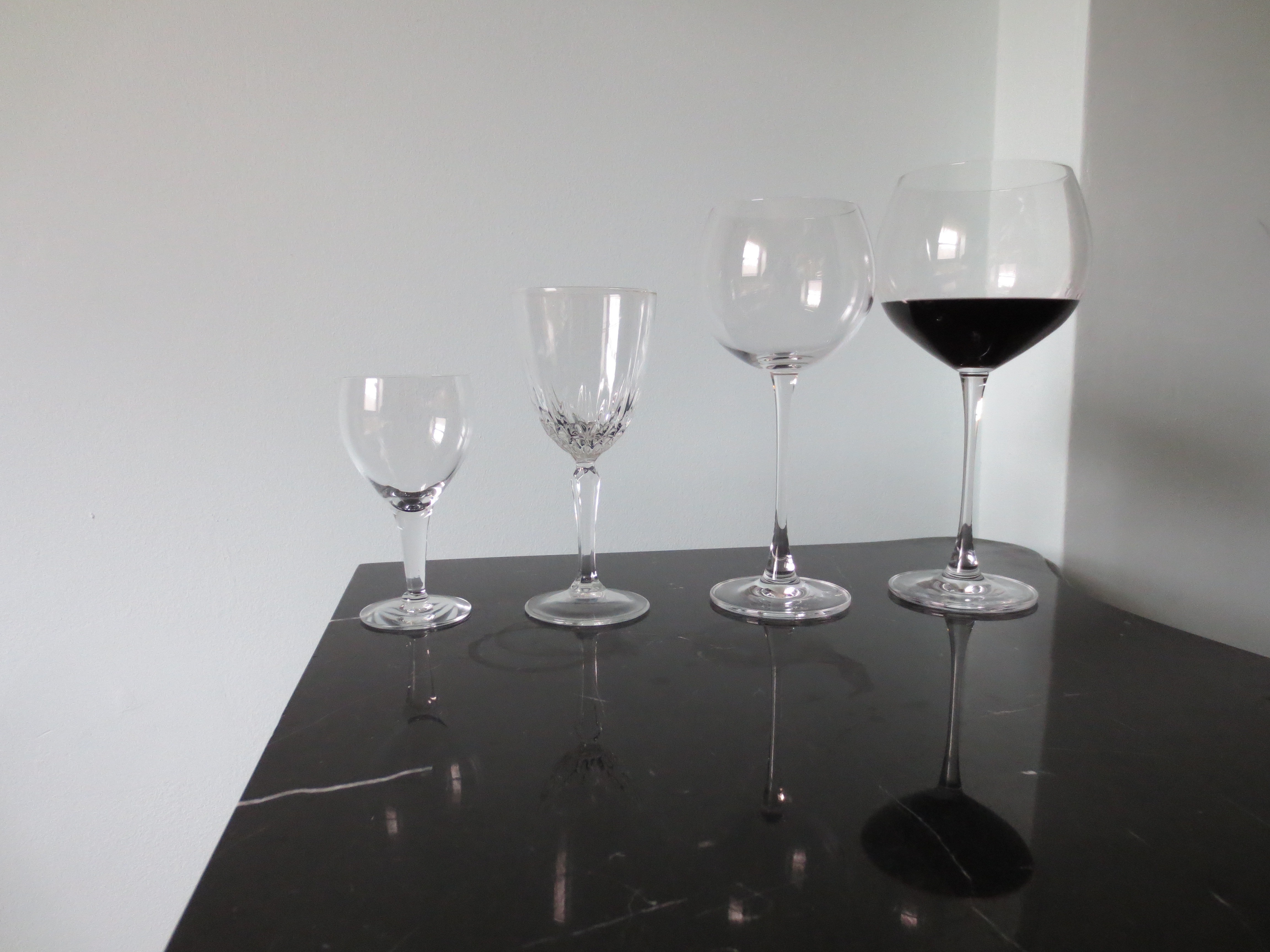
And in the largest bowl, 5 ounces looks like a positively paltry pour: There's far more glass than wine (which is the intent of the designer). However, though the large wine glasses out of which Olivia Pope drinks on Scandal have become a signature item, they're about the same size as the right-hand glass, holding nearly 23 ounces — which means even a pour that looks like less than half of the glass could be as much as two actual servings of wine.
Look, if you're staying home, and you like the feel of a big glass with a lot of wine in it, great. But if you want to be conscious of your alcohol or your caloric intake, or you spent enough on the bottle to make having a fancy glass worth it, it's worth eyeballing what a true pour is a few times so that it comes naturally, either by marking it carefully on your glass (one restaurant I frequent has a glass behind the bar with a single pour line marked in tape) or measuring before you pour. Your eyes can deceive you when it comes to how much wine you're drinking — even before you take the first sip.
Megan Carpentier is a writer and editor who has worked for The Guardian and Talking Points Memo, among others. Her work has also been published by Rolling Stone, Esquire, The New Republic, The Baffler, Foreign Policy, Ms. magazine, Glamour, and The Washington Post.
-
 6 trailside homes for hikers
6 trailside homes for hikersFeature Featuring a roof deck with skyline views in California and a home with access to private trails in Montana
-
 How Mike Johnson is rendering the House ‘irrelevant’
How Mike Johnson is rendering the House ‘irrelevant’Talking Points Speaker has put the House on indefinite hiatus
-
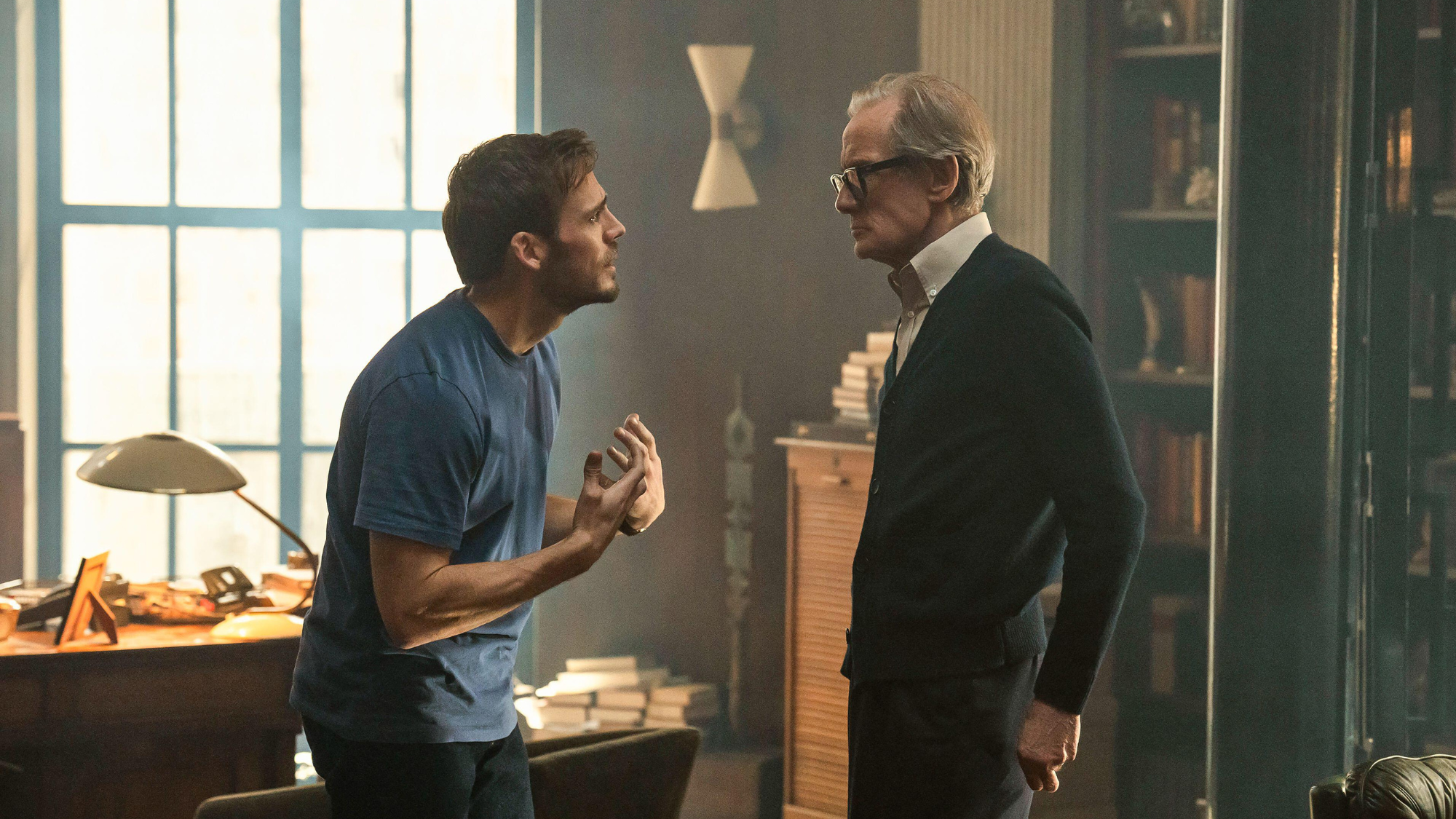 Lazarus: Harlan Coben’s ‘embarrassingly compelling’ thriller
Lazarus: Harlan Coben’s ‘embarrassingly compelling’ thrillerThe Week Recommends Bill Nighy and Sam Claflin play father-and-son psychiatrists in this ‘precision-engineered’ crime drama
